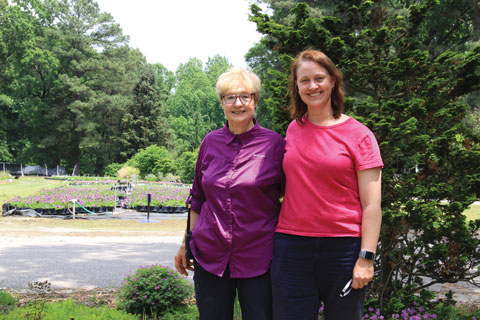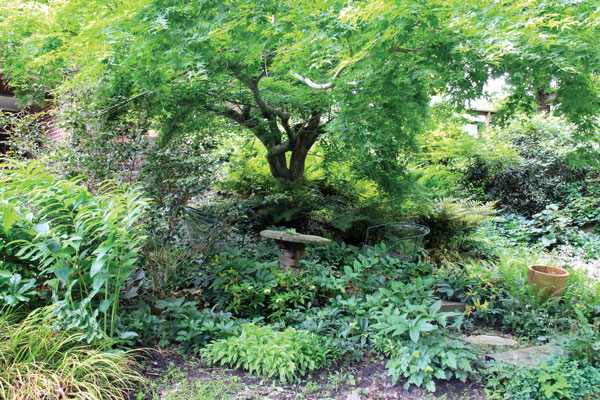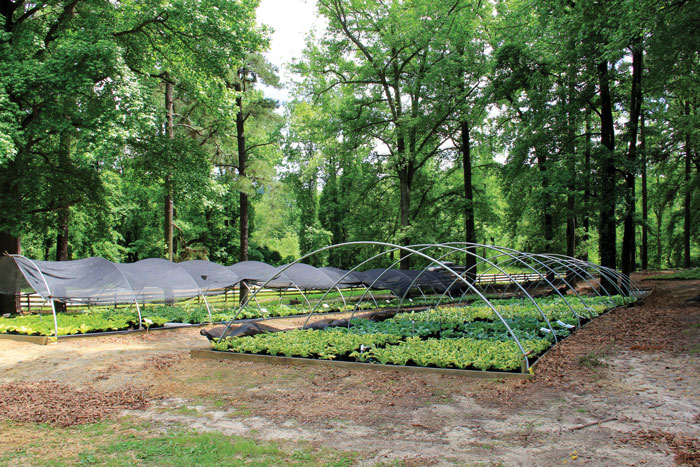3/1/2019
The Place for Perennials
Jennifer Zurko

As you drive down Bell Creek Road in Mechanicsville, Virginia, you come to the sign for Sandy’s Plants that calls out “RARE AND UNUSUAL PERENNIALS.”
“Sandy” is Sandy McDougle, who opened her perennial business in 1979 next to the farm where her parents grew strawberries. It’s always just been perennials for Sandy’s Plants and they’ve always offered varieties that her daughter Mitzi Marker refers to as “funky.”
Pictured: Sandy McDougle (left) runs Sandy’s Plants with her daughter Mitzi Marker, which offers “rare and unusual perennials” to the public, IGCs and landscapers.
“It’s what we like and what we get excited by,” explained Mitzi, who was raised on the farm since she was 6 years old and is now CEO, running the business with her mother. Mitzi’s husband J.R. is CFO.
Once Sandy started growing perennials in pots and people stopped by to ask if they were for sale, she quit her teaching job to focus on the business full time. Since then, they’ve been open to the Richmond area public, along with growing wholesale for IGCs and local landscapers in Virginia, Maryland and North Carolina.
High-end herbaceous
Mitzi said they refer to themselves as “the Williams Sonoma of perennials” because they offer novelty and premium plants that you can’t get anywhere else, and much of their pricing reflects that. But no one balks because Sandy’s Plants offers upward of 1,800 different types of perennials on 35 acres, many of which Sandy discovered herself during her frequent perennial searching missions.
When I visited them last spring, Mitzi said that asclepias was very popular at the time because of the demand for more pollinator-friendly plants. She also said she’d been seeing an upward swing in natives, as well.
And they do a lot of groundcovers, including the well-known Stepables line, which has been pretty trendy because of the fairy garden craze. One of the new plants they offered last year was Calylophus Prairie Lode, which they display with their own fairy garden. It became so popular, Mitzi said that “once we convinced people to grow it, we couldn’t keep up with the demand.”
Take it as it comes
I asked Mitzi what she thought about the newer focus on perennial breeding during the last 10 years and whether it’s made growing them easier. She said they like the new varieties and upgrades to ones that have been in the marketplace for a long time, but breeding for characteristics like first-year flowering doesn’t affect them as much. Being in a temperate Zone 7, they can still overwinter their perennials because they’re not limited by timing, size or shipping season, said Mitzi.

Informing and educating
Although word-of-mouth is always good, Sandy and Mitzi feel it’s important to make sure their customers know what’s new. And not just that, but how to grow their plants and be successful, too.
Pictured: Sandy McDougle’s backyard sanctuary displays many of the flowering and foliage perennials she’s discovered during her years of looking for unique varieties.
They’ve worked very hard on the “Find the Perfect Plant” tool on their website to include as much information as possible for each of the five criteria searchers can choose. Mitzi said they take their online presence and the information they provide very seriously.
For their wholesale customers, they produce their own catalog every year and hold in-house seminars for landscape architects and designers during the wintertime. You could speculate that Sandy’s teaching background has played a large part in their educational program when she smiled and said, “We do a good job with education.”

Perennial explorer
With Mitzi’s help keeping the business running smoothly, it gives Sandy more time to pursue her passion of searching for those rare and unusual perennials for their customers. If you take a stroll behind Sandy’s house, which is right on the property, you can see evidence of her many discoveries in her backyard garden that’s a lovely hodgepodge of flowers, ferns and foliage.
Pictured: Any perennial grower worth their salt grows hostas and the folks at Sandy’s Plants grow all of their hostas in an area on the property where the trees provide some natural shade.
So it surprised me a bit that Sandy started her career as a teacher because it seemed like she was born to be outdoors among her favorite perennials. As we walked through Sandy’s garden, past the Mallard couple paddling in the small pond, you could tell she could have stood there and talked about each and every plant all day. GT